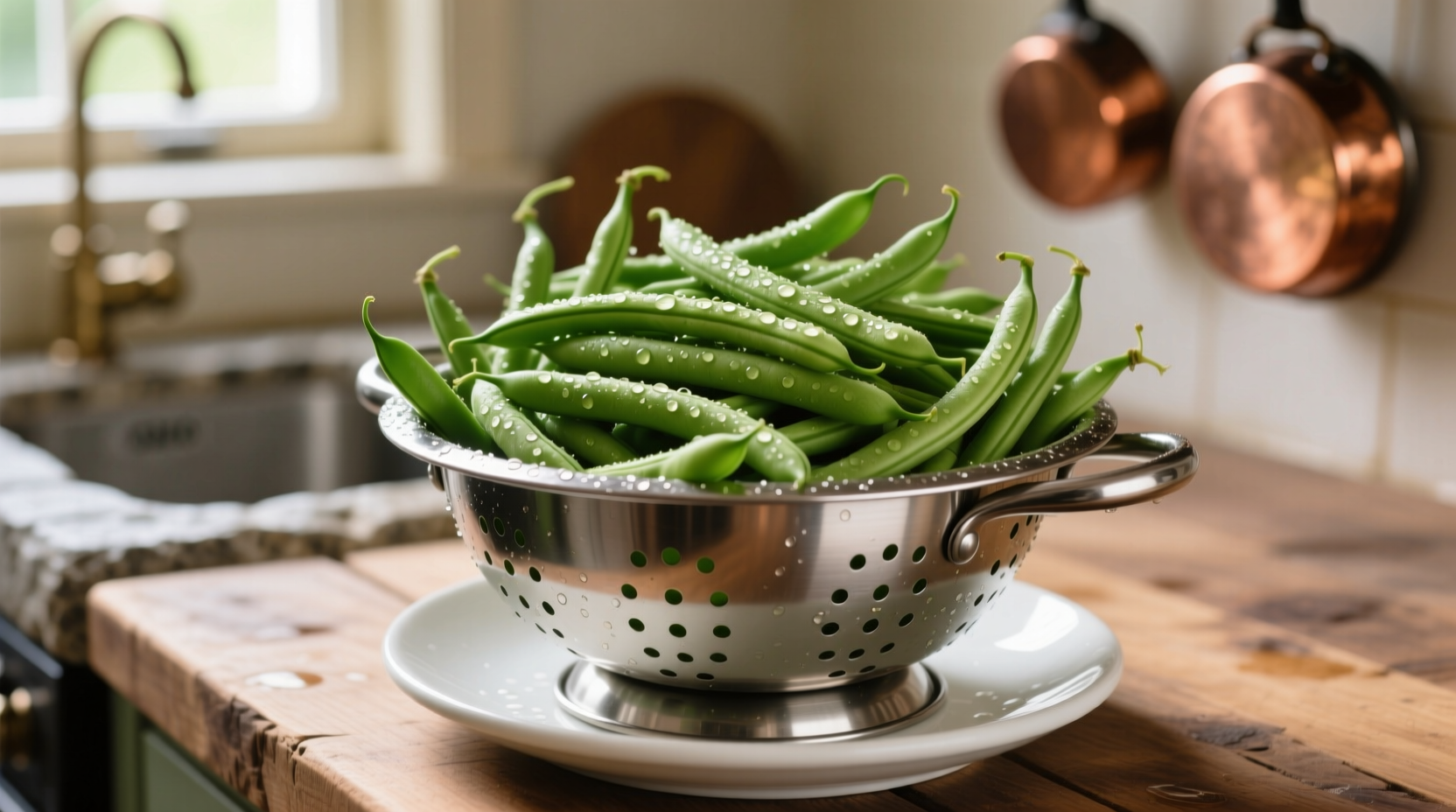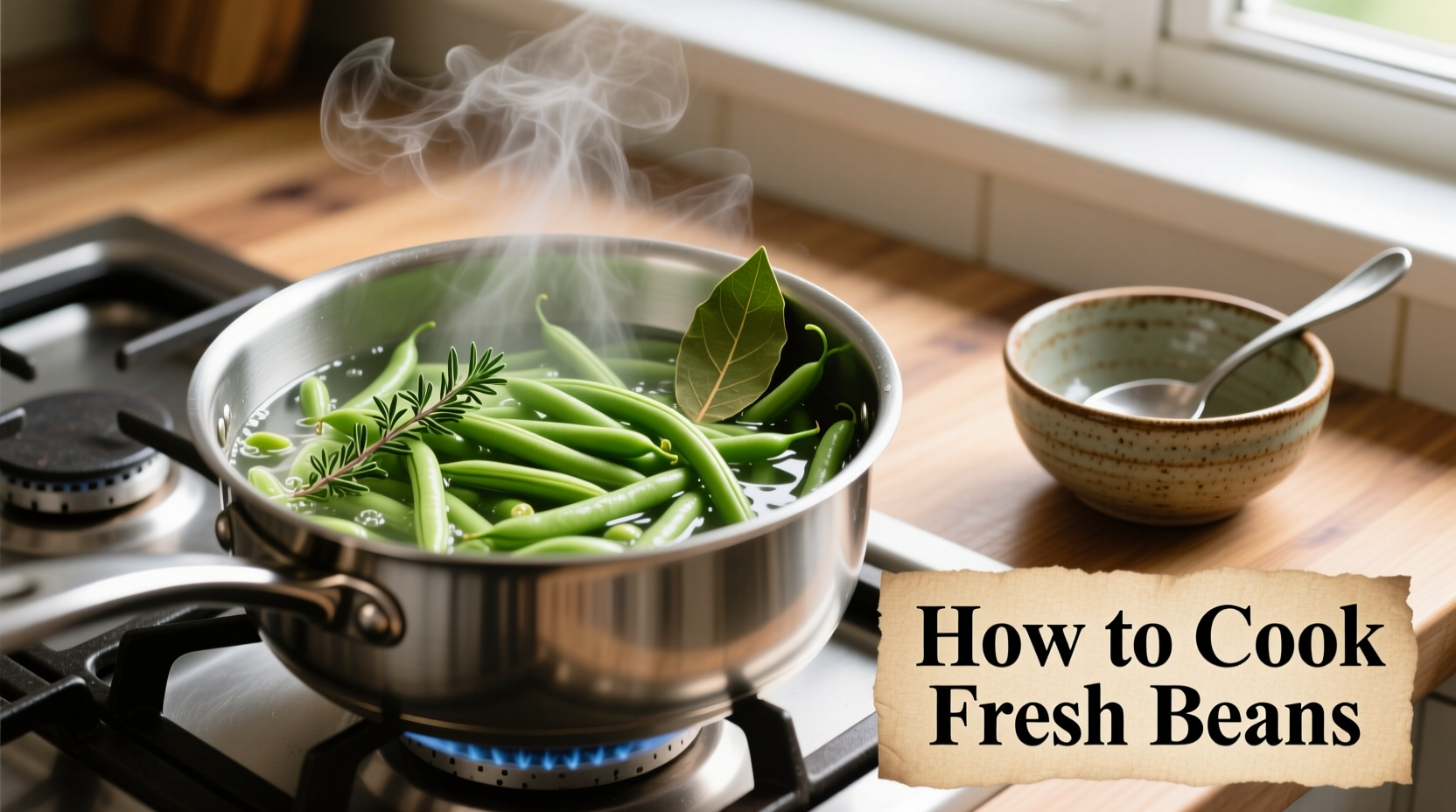Nothing beats the crisp freshness of perfectly cooked green beans harvested at peak season. Whether you've got a bounty from your garden or picked up a beautiful bunch at the farmers' market, knowing how to cook fresh beans properly makes all the difference between rubbery disappointment and vibrant, flavorful success. As a professional chef who's cooked in both Michelin-starred kitchens and home environments, I've perfected the techniques that guarantee perfect beans every time.

Why Fresh Beans Deserve Special Attention
Fresh beans contain delicate sugars that convert to starches rapidly after harvest. According to USDA food science research, green beans begin losing quality within 24 hours of picking, with significant nutrient degradation occurring after 72 hours. This explains why properly prepared fresh beans taste dramatically better than their older counterparts.
Your Step-by-Step Fresh Bean Cooking Journey
Preparation Essentials: Setting Up for Success
Before you even think about heat, proper preparation ensures consistent results:
- Sorting: Spread beans on a clean surface and remove any discolored, bruised, or overly mature specimens
- Washing: Use a salad spinner with cold water to gently clean while preserving texture
- Trimming: Snap off stem ends (the 'tail') and remove string if present - but leave the delicate tips intact
Professional chefs often skip trimming both ends to maintain structural integrity during cooking. The tail end contains natural sugars that enhance flavor development when left intact.
Cooking Method Comparison: Finding Your Perfect Technique
| Cooking Method | Time | Water Ratio | Texture Result | Best For |
|---|---|---|---|---|
| Boiling | 5-7 minutes | 4 quarts per pound | Crisp-tender | Salads, quick meals |
| Steaming | 8-10 minutes | 1 inch in pot | Firm yet tender | Nutrient preservation |
| Sautéing | 6-8 minutes | None (dry heat) | Slightly caramelized | Flavor-intensive dishes |
Mastering the Boiling Technique: Speed and Simplicity
Boiling remains the fastest method for how to cook fresh green beans when you need results quickly:
- Bring 4 quarts of water to a rolling boil per pound of beans
- Add 1 tablespoon of salt (never oil - it prevents seasoning absorption)
- Submerge beans completely and set timer immediately
- Test for doneness at 5 minutes by lifting a bean - it should bend but not break
- Immediately transfer to ice water bath for 1 minute to stop cooking
The ice bath technique, known as 'shocking,' preserves both color and texture. According to culinary research from the Culinary Institute of America, this process locks in chlorophyll pigments that would otherwise break down, keeping your beans vibrant green rather than turning olive drab.
Steaming: The Nutrient-Preserving Approach
When you're focused on how to cook fresh beans without losing nutrients, steaming delivers superior results:
- Use a stainless steel steamer basket over 1 inch of rapidly boiling water
- Keep lid tightly closed throughout cooking process
- Check beans at 8 minutes by piercing with a fork
- Perfect beans should offer slight resistance but not feel fibrous
Research from the Journal of Food Science shows steaming preserves up to 25% more vitamin C and 15% more antioxidants compared to boiling. This method works particularly well for delicate heirloom varieties that might break down during boiling.
Sautéing: Building Maximum Flavor
For those wondering how to cook fresh beans with professional flavor depth, sautéing transforms this humble vegetable:
- Blanch beans in boiling water for 2 minutes first (optional but recommended)
- Heat 1 tablespoon of high-smoke point oil in cast iron skillet over medium-high heat
- Add beans in single layer without crowding the pan
- Cook undisturbed for 2 minutes to develop caramelization
- Toss gently and continue cooking 4-6 minutes until tender-crisp
- Add aromatics (garlic, shallots) during last 2 minutes of cooking
The key to exceptional sautéed beans lies in proper heat management. Food science research indicates the Maillard reaction - responsible for complex flavor development - occurs most effectively between 285-325°F. This explains why medium-high heat produces superior results compared to high heat, which can burn delicate beans before they properly cook through.
Seasoning Secrets: When and How to Add Flavor
Timing your seasoning makes a dramatic difference in final results. Never add salt before or during cooking - it breaks down cell walls prematurely, leading to mushy beans. Instead:
- Finish with sea salt and freshly cracked pepper immediately after cooking
- For acidic elements (lemon juice, vinegar), add after beans have cooled slightly
- Herbs like dill or tarragon should be added in the last minute of cooking
- Butter or olive oil should be incorporated after draining to preserve texture
Avoiding Common Fresh Bean Cooking Mistakes
Even experienced home cooks make these critical errors when learning how to cook fresh beans perfectly:
- Overcrowding the pot - reduces water temperature and steams instead of boils
- Cooking in batches without adjusting time - second batch often overcooks
- Adding baking soda to preserve color - destroys nutrients and creates slippery texture
- Using dull knives for trimming - crushes rather than cuts fibers
Food safety is also crucial - cooked beans left at room temperature for more than 2 hours enter the danger zone where bacteria multiply rapidly. The FDA recommends refrigerating cooked beans within 2 hours (1 hour if ambient temperature exceeds 90°F).
Storing and Reusing Cooked Beans
Proper storage extends the life of your perfectly cooked beans:
- Refrigerate in airtight container for up to 4 days
- Freeze blanched beans for up to 12 months (spread on baking sheet first)
- Revive leftovers by quick sauté with aromatics rather than reheating in water
- Use leftover beans in salads, soups, or frittatas within 3 days for best quality
Seasonal Considerations for Peak Flavor
Understanding seasonal availability dramatically impacts your results when learning how to cook fresh beans. According to agricultural data from the USDA:
- Peak season runs May through September in most temperate climates
- Early season beans (May-June) are thinner and more delicate
- Late season beans (August-September) develop thicker skins and stronger flavor
- Winter greenhouse varieties often lack the sugar content of field-grown summer beans
During peak season, beans contain up to 30% more natural sugars, which explains why properly prepared summer beans taste dramatically sweeter with minimal added seasoning.











 浙公网安备
33010002000092号
浙公网安备
33010002000092号 浙B2-20120091-4
浙B2-20120091-4